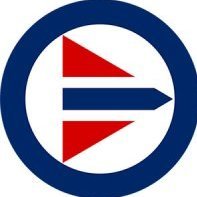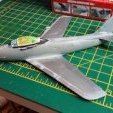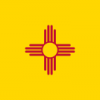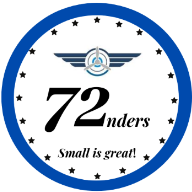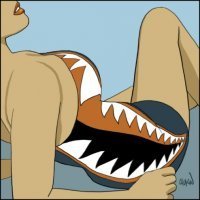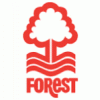Search the Community
Showing results for tags 'mustang'.
-
Hello, Here's my 1/72 Revell 1/72 P-51B. This one was started as a simple build when I was away from home for a week early this year. It then moved to the shelf of doom for a while, but got resurrected a few weeks ago. The kit is not the most accurate one and the clear parts are pretty bad, I even used a mask set on them which I normally never use. But overal a fun build, with nice surface detail. I used the kit decals, minus the famous yellow tail markings, which didn't seem to be present on this particular plane. Other Mustangs (26th FS) in the unit did have them. Painted with Mr. Hobby acrylics and some Revell Aqua on the spinner. Thanks for looking. Pete
-
After being bummed about trashing my last simple Bf109F-4 trop build near the end of completion, I got back to the bench with this Mustang. I picked another simple to build kit, a Tamiya 1/48. This time around I went with a little more challenging paint job. God willing it's gonna finish as "Berlin Express" Other than adding a flat cockpit floor and gun blast tubes it's gonna be OOB. I'm really happy with it so far. The paint job should be fun. Thanks all for your support. Ron
-
Good evening everyone, My name is Marcelo Allende, I'm from Argentina, and I want to share in the forum my first finished work in this return to the hobby. Now that I am retired and thanks to that I have a lot of free time, I chose to practice this beautiful hobby again. 34 years ago during that previous stage, (very different from today) in regard to specific materials and the information that was available at the time of assembling a kit; today everything is so different and it helps a lot for the modeller to face a project with much more calm and investigation. For this kit in particular, 35 days of work were necessary to finish it, It is not necessary to talk much about the kit, I think it is well known by all, I was very surprised when comparing it with the models built during the 80's.It is assembled without any additions, just as it came out of the box; i just added some wires in the cockpit and landing gear bays. To paint it I used alclad aluminum and enamels with homemade mixtures. For the weathering I worked with oils, and some brown pigments applied with a brush as well as powdered graphite to shade some areas. Techniques that I had never used before, and thanks to the information published here in the forum, they have opened the doors for me to be able to achieve results that I would never have dreamed of before.. There is still a lot to improve, 35 years is quite a long time, my eyes see less than before but with more practice the planes will be better =). Greetings to all, have a good weekend and excuse my writing because English is not my language...
-
Halberd Models (https://www.ebay.co.uk/str/halberdmodels) from Ukraine is to release on September 20th, 2022 three Mustang resin kits - ref. 001-345 - North American XP-51 Mustang - ref. 001-355 - Rolls-Royce Mustang Mk.X - ref. 001-355 - North American Mustang Mk.I Source: https://www.facebook.com/permalink.php?story_fbid=pfbid0YpfivSysCSibsr7q7Z2XTWBrxp8hAWcEYTavbxCrVif4rDJ7kkPdfkizFzJaeJG9l&id=100064057054695 V.P.
- 25 replies
-
- 16
-

-
This is a great little kit from Meng. There's plenty of detail, although the surface detail may not to be to some people's choice (yes I know about Mustang wings and putty). The kit is snap tight and can be assembled without any glue at all. I did use glue. although it's near perfect fit allows you to snap the parts together and run glue into the joints. I did add some seat belts to the cockpit. Decals look very thick and I had my doubts about them, but the right application of setting solution and a press down saw them dry nicely and settle into the surface detail. You do get the option of cuffed and uncuffed propeller along with different spinner and canopy. Two decal options are included, both PLA aircraft. I chose the one with the biggest national insignia. Rudder flash is supplied, but I chose to mask and paint mine. The Communist Chinese captured around 40 Mustangs from Nationalist forces at the end of the Chinese Civil War, when the Nationalist forces retreated to Taiwan. I'm not sure how long they were in service for, but were probably quickly retired once the supply of Russian Mig 15's arrived.
-
Hi there, Last one out of the production line. Ok, yes, I've yet to add two wing tanks, and one last stencil... I did have a lot of fun with this one, but yet I managed to make a lot of errors and had my share of bad luck, don't worry! So, I'm not 100% happy with the result. 70% maybe? Still, I like it, and hope you will Weathering much too strong for this scale, to be more specific for the exhausts and the guns, antenna wire much more 1/32 than 1/72, bad fi tof the black upper antenna (Gonio?), etc... Also, bad luck with PMA decals. Everything went well with the stylized sun on six positions, but I had three different sets of numbers and stencils wrecked before the one that decided to stay in place! This specific F-51 is part of a group of aircraft that were paid by different donators, 067 (F-51067; 44-74956) being paid for by Taipei City(City name is written under the pit. Any comments welcome, do not hesitate to tell me what you think, whatever it is.
-
Good evening all, Tonight I have for inspection the well known Airfix Mustang. I won't run through the build process as everyone should be aware of it by now. As usual, I wanted to pick a less common scheme - this often proves to be the most fun part of model building (the research and gathering of pics). Accordingly, I used an Xtradecal sheet to build an Italian Mustang from shortly following the war, while Italy was awaiting Vampires. They also used P47s, Spitfire Vs, P39s, and heavily modified P38s in this time. In a break from tradition, this one was brush painted instead of spray painted. I think the results are slightly better, as the finish looks a little tired, but in the future I may stick with the rattle cans for the sake of expedience. Right, the pics - Next up will be a Gladiator or 3, the PRU Hurricane (Honest! I just need varnish.) and a 109G. A Defiant may sneak in as well if I get around to finding a spare roundel. Thanks all, Best, Tweener
-
P-51B Mustang | HobbyBoss | 1/72 Capt. John "Pappy" Medieros, 364th FS, 357th F.G.. USAAC 1944 Finished this on May 20th, 2022. I've seen a lot of terrific Arma Hobby P-51B builds lately, so its a little embarrassing to trot this one out... I bought this kit only for the gears and gear doors for my "Geronimo" project since the gears and doors disappeared a long time ago. I didn't plan on making this kit since my recent HobbyBoss experiences were really bad. When I started playing around with it, though, I found that the fit was surprisingly very good and surface detail was pretty nice. So, in an effort to make some room in the stash closet, I decided i'd whip this one together. The decal sheet I used for "Geronimo" had several different schemes on it, so I chose this one because it was the only one that was British dark green and medium sea gray. I had an extra Eduard photo etch cockpit set so I used it to dress up the otherwise spartan interior. HobbyBoss filled in the area behind the seat, and I couldn't find a way to cut it out, so I got creative with painting and making radio from scratch (Pictures follow). And this time I have a pilot @Jackson Duvalier ! -- I found him in a fold of the Monogram box when I was cleaning up after making "Geronimo". My experience with "Geronimo" was that the checkerboard decals were a hair pulling experience, so I elected to paint the checkerboard. My measurements were slightly off, so tolerance stackup resulted in one of the checks being narrower than the rest, but I'm not telling which one. I also painted the yellow stripe on the nose for the same reason. As with every HobbyBoss easy assembly kit, there were some issues. They always goof up the canopy, and this was no exception -- the scalloped windows behind the seat are too small. I probably shouldn't have painted the frame on them, and they would've looked better, but I didn't think of it until I was done. Nobody gets the wing kink right, so I won't even mention it. The intake on the bottom seems too small. The corners on the top of the tail were a little too sharp, so I rounded them. The fit was surprisingly good except for one step on the bottom part of the left cowl, but that was an easy fix. The only other major problem is the propeller: the way they cast it, it looks like the blades are cupped or bent forward. They're not. I wish I had a propeller in the spares box when I was building this because it is really distracting! I painted this with Hataka RAF dark green, medium sea gray and insignia yellow. The red was Mr. Color insignia red. The wheel wells were pretty ridiculous; they were too shallow and the detail wasn't accurate or realistic. I just filled them in with epoxy putty Here's my scratch built radio installed: My Monogram pilot: And here's when the cockpit was finished. The effort in the cockpit was worth it because you can see pretty well into the cockpit through the malcolm hood. Another ridiculous thing... HB only provided one of each style of drop tank. I rummaged around and found exactly one of the style of drop tank I wanted from a Hasagawa P-40. I had to add some details to make it match: Hope you like it! it was not the best kit, but it turned out much better than I thought it would. Comments, questions and constructive criticism welcome.
- 11 replies
-
- 29
-

-
Some of you may be following my 1/72 Glider thread, which is currently stalled awaiting some additional glider mojo to get onto the next build, a couple of Grunau Baby’s. In parallel with that build, I have also been working on a several other 1/72 aircraft (no WIP for these). One of those builds was this one....... So here is my rendition of the RS Models F-51H. First, the box art which is pretty striking and a scheme I seriously considered doing, but in the end opted for the all red (topside) aircraft. And the rear shows the options available from this kit, all decals supplied within. The decals themselves were superb quality. In my experience, RS kits are quite a challenge to build but, IMHO they carry very subtle surface detail and seem to compare very well in accuracy and shape, when finally knocked into shape......... oh and I do quite like them! This one was no less of a challenge, and certainly very basic when compared with the recent Arma Hobby P-51’s built on here by both @Procopius and @Cookenbacher. Those builds have inspired me to build a further mustang, from an Arma Hobby kit of course! So there you are Edward and Cookie, I've actually finished it! As there was no WIP, here are a few shots in progress for those who like to see bare plastic......... And just to prove there is something inside the cockpit. A bit close and cruel this one! After two coats of Tamiya LP-7 Red I used quite a cocktail of paints, having now got over my dread of mixing different types of acrylics, lacquers and enamels. Care and consideration in application is key of course, but mixing paint types does work if you are careful! The whole model received a primer coat of Mig Ammo One Shot grey primer. This paint goes on beautifully straight from the bottle, airbrushed of course. The undersides were painted with AK Xtreme Metal Aluminium, and the topsides are Tamiya Lacquer LP-7 Pure Red. The grey undercoat helped to slightly dull the brightness of the red, which is what I was after. The wingtip black bands were masked and airbrushed using Tamiya semi-gloss black Acrylic. MRP’s gloss varnish was applied prior to decals, and after decals, followed by some very light oil washes. A final coat of MRP’s semi-gloss varnish sealed everything in. These MRP varnishes have become one of my favourite solutions for finishing coats. I tried to keep weathering very subtle mostly using very light panel washes in slightly darker red brown on top, and grey undersides, as this aircraft was kept pristine for the 1954 gunnery meet. Learning my paint and weathering skills through watching Giorgio's @giemme builds! So, to the completed model. Shots are from my phone and the red seems to have come out very intense. In normal daylight it is slightly less so, and all of the very fine surface detail does indeed show up well! Some extra shots as @Winenut had quite rightly pointed out the panel washes were hard to see in the pictures. I think at certain distances, my mobile gets blinded by the red! And finally a couple of shots with her older stablemates. Comments/questions welcome Thanks for looking and watch out for a QF-86E coming soon in RFI! Terry
- 35 replies
-
- 54
-

-
Hello fellow Britmodellers, this is my first completion of the year, and my first build thread in a while that actually leads to the Ready for Inspection section. It's the new 1/72 Arma high back Mustang kit, and it definitely lived up to expectations. It's depicting famous Polish ace, Jan Zumbach's Mustang III when he was commander of 133 Wing. Thanks for looking!
- 15 replies
-
- 52
-

-
P-51B/C Wheels & Exhausts (for Arma Hobby Kit) 1:72 Eduard The new Arma Hobby kit i great in its own right, that has not stopped Eduard from releasing their own updates for the kit. Wheel - Diamond tread (672282) This set of new main wheels features conventionally cast main wheels as well as a set of yellow tape masks (not shown). The kits feature a diamond tread pattern. The casting is upto Eduard's usual high standard. Exhaust Stacks (672279) This set features new exhausts stacks for the main engine and are 3D printed given the size these will always be better than injected parts. The stacks come in a protective plastic case. Exhaust Stacks with fairings (672280) This set features new exhausts stacks with fairings for the main engine and are 3D printed given the size these will always be better than injected parts. The stacks come in a protective plastic case. . Review samples courtesy of
-
P-51 C Mustang Mk.III (70039) 1:72 ARMA Hobby Originally developed to fulfil a British requirement for new fighter aircraft, the unmistakable North American P-51 Mustang famously went from drawing board to first flight in just 178 days. It went on to become one of the most famous and successful aircraft of the Second World War. Transformed by the addition of Rolls Royce’s legendary Merlin engine, the Mustang went from strength to strength and was eventually developed into several variants. Even though the D model is the most recognised the earlier models were still great aircraft. The B & C were the first to use the Merlin engine which gave better performance over 15000 ft. They were known in RAF service as the Mustang III. The B models were built at Inglewood and the C models which were identical were built in Dallas. The RAF decided that the original hinged canopy did not offer enough visibility for operations and the British corporation R Malcolm & Co designed a sliding bulged canopy for the aircraft which then became known as the Malcom Hood. The search for better all round visibility would lead to the later P-51D, however some pilots are said to have preferred the Malcom hooded P-51B/D than the later P-51D as it was lighter and had better handling, one of the downsides was only 4 guns as opposed to the D's six. Exiting the B/C in an emergency was also said to be easier than the D. The Kit This is a new tool kit from ARMA Hobby which seems to have garnered good reviews. It really also was time we had a new tool B/C in 1/72. The kit is a rebox of the P-51B/C which we reviewed here but here comes without the PE and masks of the earlier kit. The kit arrives on two main sprues, a clear sprue, a sheet of decals. The quality of the parts is first rate, all surfaces feature fine engraved panel lines, there is a great deal of moulded in detail in the fuselage and main wheel wells. There are two choices of tail featuring the small fillet tail, and the one with no fillet. Bombs and two types of drop tanks are provided for the wings. Due to the different options being provided from the kit its worth while checking the instructions for these before starting work. Construction starts in the cockpit. The frame for the seat is added to the floor and the seat is fitted. Belts are provided as decals. The fuel tank is fitted behind the seat with the radios going on top. The control column is added in front of the seat and then the instrument panel and its coaming are built up. Instruments are provided as decals. Work then moves to the inside of the fuselage parts with more decals being added. The main radiator is made up and this can be installed in the right fuselage half, along with additional controls and the tail wheel parts. More parts are also fitted into the left fuselage half. Once done the tail wheel and cockpit can be installed and the fuselage closed up. Moving onto the wings the wing spar part is installed along with parts for the wheel well. These are added into upper wing, and the two wing parts can be assembled. The separate flaps can then be installed. The wings can then be mated to the fuselage. At the rear of the fuselage the tail and sailplanes can be added, a finless and filleted tails are provided for the different decal options. The main landing gear can then be made up and fitted. At the front the chin intake, propeller and exhaust are added. Different plates/vents are provided for the lower engine cowl. For the spine different antennas are also provided for the different options. Different canopies are provided for the model. If the normal canopy is to be opened then the modeler has the option for this. A slightly larger Malcom hood is supplied for the slid back option. Lastly bombs or drop tanks can be fitted to the wings as needed. Markings There are printed by Techmod so should pose no problems. 2 marking option are provided for the kit; 42-103532, FB382/PK-G, 315 Polish Sqn RAF, Coolham June 1944 42-103258, FB328/GA-S, 112 Sqn RAF, Lesi Nov 1944 Conclusion It is great to see this important aircraft being kitted by a new manufacturer. The kit seems to have been very well received by modellers. Very Highly recommended. Review sample courtesy of
-
Hello all, This build was another GB with my dad which was completed a few weeks ago. Both kits are Tamiya 1/72, Captain Weaver's mustang was done by my dad, and "Tallahassee lassie" was done by myself. The models were painted with Mr Color Super Metallic 2 Super Fine Silver and Super Iron and Mr Color H8 Silver, NO PRIMER was used. The only AM products that were used are PE for the interiors and antennas. Hope you enjoy! "Tallahassee lassie" : Captain Chuck Weaver's mustang: Some pics of both mustangs together:
- 13 replies
-
- 38
-

-

-
Dear fellow Britmodellers, here's my 1/72 Arma Hobby P-51C Mustang in markings of 382nd Fighter Squadron, 363rd Fighter Group, in France 1944. I built from the "Expert Set", photographs by Wolfgang Rabel. A full build review will be featured in an upcoming edition of Phoenix Aviation Modelling magazine. Thank you for your interest, best greetings from Vienna Roman
-
I posted this information a few days ago. I understand that my post may have been permanently deleted. It was posted here as I was looking for stencils to use in the P-51D Mustang main gear bays. I followed the original post up once I found the decals, see attached, in case anyone else was looking for them. Someone responded with what seemed to state that the stencils were never used on wartime Mustangs. I was told to refer to "Building the P-51 Mustang" book by Michael O'Leary and 'reformulate' my question. I replied that I had the book but was building Latin American Mustangs (which may have been rebuilt). A third person then posted that I was in the wrong forum as it should be Post War (or Cold War), so I apologized after removing my content. Looking at the aforementioned book, I see the stencils clearly on the bare aluminum of the Mustangs on the production line in several photos. I would refer the reader to page 103 where the stencils are clearly seen between the puttied rows of rivets on a P-51B and page 105 where they are clearly seen on several panels to include the fuel tank cover panel, main landing gear wheel covers, and other skin panels. On page 145, bottom left, we can clearly make out the stencils on a P-51D upper wing. These are the clearest examples of the stencils in use during wartime production. The decals which have these stencils are only available in 1/32nd scale from Fundekals, reference number 32001: The red stencils are in the rectangle to the left of the upper 'Star and Bar' which is horizontally oriented. I hope this is of use to someone. Regards,
-
P-51 B/C Mustang (70038) 1:72 ARMA Hobby Expert Set Originally developed to fulfil a British requirement for new fighter aircraft, the unmistakable North American P-51 Mustang famously went from drawing board to first flight in just 178 days. It went on to become one of the most famous and successful aircraft of the Second World War. Transformed by the addition of Rolls Royce’s legendary Merlin engine, the Mustang went from strength to strength and was eventually developed into several variants. Even though the D model is the most recognised the earlier models were still great aircraft. The B & C were the first to use the Merlin engine which gave better performance over 15000 ft. They were known in RAF service as the Mustang III. The B models were built at Inglewood and the C models which were identical were built in Dallas. The RAF decided that the original hinged canopy did not offer enough visibility for operations and the British corporation R Malcolm & Co designed a sliding bulged canopy for the aircraft which then became known as the Malcom Hood. The search for better all round visibility would lead to the later P-51D, however some pilots are said to have preferred the Malcom hooded P-51B/D than the later P-51D as it was lighter and had better handling, one of the downsides was only 4 guns as opposed to the D's six. Exiting the B/C in an emergency was also said to be easier than the D. The Kit This is a new tool kit from ARMA Hobby which seems to have garnered good reviews. It really also was time we had a new tool B/C in 1/72. The kit arrives on two main sprues, a clear sprue, a sheet of PE and canopy masks (not shown). The quality of the parts is first rate, all surfaces feature fine engraved panel lines, there is a great deal of moulded in detail in the fuselage and main wheel wells. There are two choices of tail featuring the small fillet tail, and the one with no fillet. Bombs and two types of drop tanks are provided for the wings. Due to the different options being provided from the kit its worth while checking the instructions for these before starting work. Construction starts in the cockpit. The frame for the seat is added to the floor and the seat is fitted. Belts are provided as PE with decals on top. The fuel tank is fitted behind the seat with the radios going on top. Two of the decal options dont have this tank and that is also shown in the instructions. The control column is added in front of the seat and then the instrument panel and its coaming are built up. Instruments are provided as decals. Work then moves to the inside of the fuselage parts with more decals being added. If the Recon version is to be made then holes for the cameras need to be made. The main radiator is made up and this can be installed in the right fuselage half, along with additional controls and the tail wheel parts. More parts are also fitted into the left fuselage half. Once done the tail wheel and cockpit can be installed and the fuselage closed up. Moving onto the wings the wing spar part is installed along with parts for the wheel well. These are added into upper wing, and the two wing parts can be assembled. The separate flaps can then be installed. The wings can then be mated to the fuselage. At the rear of the fuselage the tail and sailplanes can be added, a finless and filleted tails are provided for the different decal options. The main landing gear can then be made up and fitted. At the front the chin intake, propeller and exhaust are added. Different plates/vents are provided for the lower engine cowl. For the spine different antennas are also provided for the different options. Different canopies are provided for the model. If the normal canopy is to be opened then the modeler has the option for this. A slightly larger Malcom hood is supplied for the slid back option. Lastly bombs or drop tanks can be fitted to the wings as needed. Markings There are printed by Techmod so should pose no problems. 7 marking option are provided for the kit; P-51B "Ding Hao" Major Howard, 356th Fighter Sqn, 354th Fighter Group, Boxted UK, April 1944 F-6C "Azel/Boomerang" 162nd Recon Sqn, 10th Photographic Recon Group, Chalgrove, UK 1944 Mustang III, CV-C 3 Sqn RAAF, Cervia, Italy, 1945 Mustang III, "Barbra Jurek" F-C-F KH516, Captain Mencel DFC, 309 Sqn (Polish) RAF, April 1945 P-51C "Evalina" 1st Lt Strawbridge, 26th Fighter Sqn, 51st Fighter Group, China 1945 P-51C "My Pal Snookie" Lt Pawlak, 282nd Fighter Sqn, 363rd Fighter Group, France, July 1944 Option 5 but captured by the Japanese after landing due to technical failure, Japan 1945 Conclusion It is great to see this important aircraft being kitted by a new manufacturer. The kit seems to have been very well received by modellers. Very Highly recommended. Review sample courtesy of
-
My quick build of the Airfix 1/72 North American P-51B Mustang (02083) which was knocked out for an ATF Bomber Command GB in less than two weeks. It represents an RAF Mustang III flown by Wing Commander Leonard Cheshire's Mustang HB837 attached to 617 Squadron. I wasn't hundred percent sure of the extent of the yellow on the leading edges nor the colour of the spinner (sky or white have both been suggested). The more I researched them, the more confused I got and in the end I "winged it". Decals came from the spares box and the XtraDecal 617 Squadron set (X72093). The "Malcolm Hood" transparencies are from Falcon and are a bit oversize (they were supposed to be for a Hasegawa kit) but the result is still okay. Dave
- 4 replies
-
- 20
-

-
- Malcolm Hood
- 617 Squadron
-
(and 1 more)
Tagged with:
-
A-36/P-51/P-51A Control Surfaces Set (4434) 1:48 CMK by Special Hobby For Acadmey / Acc Miniatures Kit This set allows all the wing control surfaces and the rudders to be positioned as the modeller wants. . All of the kit control surfaces will need to be cut off to use these. This set arrives in CMKs normal plastic/card box. The parts require minimal clean up from the casting blocks all on the edges that attach to the airframe, and all look to be top quality. This will add something extra to your kit Highly recommended. Review sample courtesy of
-
North American P-51D-15 Mustang (03838) 1/32 Carrera Revell The P-51D was developed by the North American Aviation company as a possible fighter for Great Britain, but due to the poor performance of the original Allinson engine it wasn’t all that good, especially at high altitude. Luckily they decided to try strapping a Rolls-Royce Merlin engine to the airframe and it brought out the best of its design, which included the energy efficient laminar flow wing that gave it the potential to escort Allied bombers all the way to Berlin with the addition of drop-tanks and a lean mixture when not in combat. It was flown in this guise as the Mustang III in British service, and as the P-51B/C in US service, then as the P-51D with the bubble canopy and cut-down aft fuselage, with an additional fin-fillet added later to improve stability that had been reduced by the new shape and fuel tank location. In British service it was known as the Mustang Mk.IV, and the same variant made at the Dallas factory with hollow AeroProducts props that was designated P-51K in US service was known as the Mk.IVa in RAF service to differentiate. Sadly, the hollow prop was prone to vibration thanks to some inferior quality control at the factory, so was often swapped out in the field. The P-51D is the Mustang that most people think of when they hear the name, unless they’re more of a petrol head or a bit horsey. The Kit Here Revell have re-boxed their own new tool kit from 2017 this time with parts for the later Mustangs. The frankly lacking openend box holds a good deal of plastic. As well as the wings there are nine sprues of grey plastic and three clear sprues. There are three full canopies provided, two labelled as "Spares", which probably goes back to the problems with the canopy on earlier kits. These look to have no issues though. The rest of the tooling is upto Revell's usual high standards. Construction starts in the cockpit with the instrument panel. The lower part differs if you have an aircraft armed with rockets or not. Instruments are provided as decals. Next up the seat back with head armour goes onto the cockpit floor in front of the tanks after attaching to its frame. The rack for the radio equipment then goes on top of the tanks, followed by the equipment. The main part of the seat then goes in. Revell provide a normal seat and a more bucket type of seat. There is no mention made of which one to use for which deal option, the modeller will need to do their own research on this. The left an right interior sidewalls are then built up from various components. These go together around the floor/tank assembly with the rudder pedals and instrument panel going in at the front. To the rear top of this is added the canopy rail; and to the front the engine firewall. Next up the lower radiator assembly is made up, this part also indulges the tail wheel bay. The individual fuselage sides now attach to the relevant tail parts. They need to be added in this order as now when the two fuselage halves go together the cockpit and intake sections need to go in at this point. At the front dont forget to install the exhaust stubs as well (there is no engine in the kit). Am mounting paste for the prop with lower intake then goes on the front. Now we move to constructing the wings. The upper and lower wings are both a single part. The wheel bays and wing spar need to be assembled and placed between the wings. The appropriate holes for wing tanks, Bombs and or rockets need to be drilled out first. Once the wings are together the control column for the cockpit is fitted as the top of the wing is the floor of the cockpit. The fuselage can now be mated to the wings and the intake lip for the main intake made up and added. The control flaps for the intake are added and at the front of the wing a plate is added between the wing and fuselage sections. If you are making your model wheels up then a section of closed door can be added in. Next up the tail surfaces are added, for the rudder and control surfaces all these are separate. Following this the ailerons and flaps for the main wing are built up and added on. The flaps can be raised or lowered as needed. Moving back to the cockpit the front screen is added with the instrument coaming and gunsight being fitted in. The font scree contains a part of the fuselage to allow a good faired in fit. The main canopy gains its internal fixtures before being fitted. Moving on to the undercarriage the tail wheel and strut are built up first and added in. For the main gear doors they must be cut from the one section which provides for the closed bay doors. The main wheels are two part, these are fitted to the legs and into the model along with the gear doors. At the front the prop is made up and fitted. For the weapons 8 rockets, tow bombs; and a choice of two different types of drop tank are provided to be used as needed. The last items to be fitted are the aerial, pitot tube, and navigation lights. Decals The large sheet provides decals for two options; 44-14985 "The Mille G" Flown by Maj Giller, 343rd FS, 55th FG, Wormingford, England 1944 (This aircraft still flies today) 44-15459 "American Beauty / Lovely Lila" 308th FS, 15th FG, Italy 1944 Conclusion This is a great looking kit from Revell and its good to see the later mark now kitted. Revell model kits are available from all good toy and model retailers. For further information visit or
-
After the P-51B/C (link), Arma Hobby is to release the 1/72nd North American P-51D/K Mustang bubbletop versions. Source comments: https://www.facebook.com/ArmaHobby/posts/4796445153719137 V.P.
- 44 replies
-
- 8
-

-
- Mustang
- Arma Hobby
-
(and 1 more)
Tagged with:
-
P-51D-20 Mustang Weekend Edition (84176) 1:48 Eduard The P-51D was developed by the North American Aviation company as a possible fighter for Great Britain, but due to the poor performance of the original Allinson engine it wasn’t all that good, especially at high altitude. Luckily they decided to try strapping a Rolls-Royce Merlin engine to the airframe and it brought out the best of its design, which included the energy efficient laminar flow wing that gave it the potential to escort Allied bombers all the way to Berlin with the addition of drop-tanks and a lean mixture when not in combat. It was flown in this guise as the Mustang III in British service, and as the P-51B/C in US service, then as the P-51D with the bubble canopy and cut-down aft fuselage, with an additional fin-fillet added later to improve stability that had been reduced by the new shape and fuel tank location. In British service it was known as the Mustang Mk.IV, and the same variant made at the Dallas factory with hollow AeroProducts props that was designated P-51K in US service was known as the Mk.IVa in RAF service to differentiate. Sadly, the hollow prop was prone to vibration thanks to some inferior quality control at the factory, so was often swapped out in the field. The P-51D is the Mustang that most people think of when they hear the name, unless they’re more of a petrol head or a bit horsey. The Kit We were treated to the ProfiPACK, & Royal Class of this new tooling and now it’s everyone’s favourite Mustang in 1:48 (with good reason), with an increasing number of variants with filleted and un-filleted tails differentiating them. We’re now able to get our hands on a Weekend Edition with 4 markings options. Inside the box are five sprues in blue/grey styrene, a clear sprue, a small fret of Photo-Etch (PE), two decal sheets and a thick instruction booklet with the markings options printed in the rear in colour. Construction begins with the seat, which is built up first, then the cockpit floor, tanks and radio gear are added in along with sidewall framework, the seat belts are provided as decals. It shapes up to be a well-detailed cockpit. The tail-wheel bay is made up, the radiator pathway and a spinner backing-plate are all slipped into the fuselage before they are closed up. The wheel bays are built up next with some advice regarding colour added along the way, splitting the bay down the middle and bracketing it front and back with bay walls that have partial ribs added once in place. This assembly is fitted to the full-width lower wing and joined by backing panels to the spent brass chutes, a central insert that shows through the bay, and a clear part for the identification lights. The wing uppers go on and the ailerons fit into tabs in their recesses, with some room for offsetting if you wish. On the leading edge is an insert for the guns, and you’ll need to fill a few panel lines under the nose. There are also a complement of holes that will need opening up if you’re fitting drop-tanks, so have a pin vice to hand. The wings are mated to the fuselage, and tiny clear wingtip lights are slotted in on long stalks, then the tail fins are begun. The filleted fin is a separate insert and the elevator fins with their metal flying surfaces are inserted into slots horizontally, while the rudder can be fitted at any sensible angle. The small PE fret provided with this kit is used as a template for panel lines for one of the decal options. You may have noticed the lack of comments about the instrument panel during building of the cockpit, but we’re getting to it now. The finished coaming and rudder pedals drop into the fuselage, but are first fitted with the panel, instruments are provided as decals. The two radiator doors under the tail are fitted at the same time as the tail wheel, with bay doors and PE closure mechanism added along the way, with a scrap diagram showing the correct orientation. Inside the main bay a pop-up landing light is slotted into its mounting point, and chin-scoop plus the correct panel under the nose (decal choices again), then it’s on to the main gear legs. The tyres are diamond tread, with wheels and hub caps added before they’re fitted to the struts, which have separate styrene scissor-links and door supports slotted into place. The flaps are each made up from two styrene parts, and a decal on the curved leading edge after painting. Those are all slotted in place on the underside along with the rest of the bay doors, and at that point you can sit her on her wheels and add the appropriate exhaust stacks. The prop is made from two paired blades that fit perpendicular to each other in a choice of two types of blades and spinner, canopy with interior structure, a backup ring and bead sight. There’s also an aerial on the spine behind the canopy. The weapons and drop tanks are last to be made, with a choice of two tank types that all share the same type of pylon, while a few spares are left on the sprue, including a set of six rockets under the wings, which have separate tails and moulded-in launch-rails and would be fitted three per side. Markings Eduard provide 4 options, which is pretty good for a weekend boxing. The two sheets are separated between the individual markings and standard stencils. From the box you can build one of the following: 44-72505, Maj. William A. Shomo, 82nd TRS, 71st TRG, 5th AF, Lingayen, Luzon, The Philippines, May-June 1945 44-72199, Capt. Charles E. Weaver, 362nd FS, 357th FG, 8th AF, RAF Leiston, Great Britain, April 1945 44-72099, Lt. Warren S. Blodgett, 84th FS, 78th FG, 8th AF, RAF Duxford, Cambridgeshire, Great Britain, April 1945 44-72558, 2nd Lt. Bennett C. Commer/2nd Lt. Henry C. Seegers jr., 458th FS, 506th FG, 20th AF, Iwojima, July 1945 Decals are printed in-house with good registration, sharpness and colour density, with a thin gloss carrier film cut close to the printed areas. The stencils are dealt with on the back page in the instructions to prevent clutter and replication of effort, and the various metallic and fabric covered sections for the "unpainted" decal options are marked on another page. Conclusion We already know the quality of the basic kit, and this box thats what you get, it is still a great kit without all the Eduard bells and whistles and that suits some modellers (like the reviewer). Very highly recommended. Review sample courtesy of
-
Hi folks, here's my representation of a Dominican Air Force F-51D as used towards the end of its' career in the 1970s! Airfix kit, Eduard etched brass seatbelt and Armycast cz decals. There are I'm sure a few inaccuracies (probably used the wrong canopy and I think I should've tinted it green) but it was an enjoyable build. Don't overlook the Airfix kit, though the detail isn't as fine as Eduard's it builds up just fine. 20211010_100754 by bryn robinson, on Flickr 20211010_100801 by bryn robinson, on Flickr 20211010_100823 by bryn robinson, on Flickr 20211010_100832 by bryn robinson, on Flickr 20211010_100838 by bryn robinson, on Flickr 20211010_100848 by bryn robinson, on Flickr 20211010_100919 by bryn robinson, on Flickr 20211010_100930 by bryn robinson, on Flickr 20211010_101033 by bryn robinson, on Flickr 20211010_102948 by bryn robinson, on Flickr
- 10 replies
-
- 34
-

-

-
hi everyone !😄 this is my REVELL 1/24 'GT 350 H, I once build mustang 2+2 fastback couple months ago,I just love mustang...this time I try to build the famous GT350H,I add some modification and detail patrts on it..the black paint is quite tricky I try to build this model as good as I could, still, there are some defects on this model🙁,but I just love this car😅..... hope you guys like it!!🙂 and here is the video build if you are interested..🙂
- 12 replies
-
- 24
-


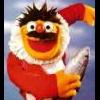


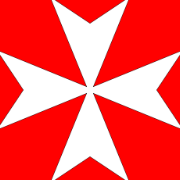


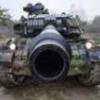
.thumb.jpg.3d6eff3e2f6cc042679bca864bcb2b1a.jpg)
